Category: Context
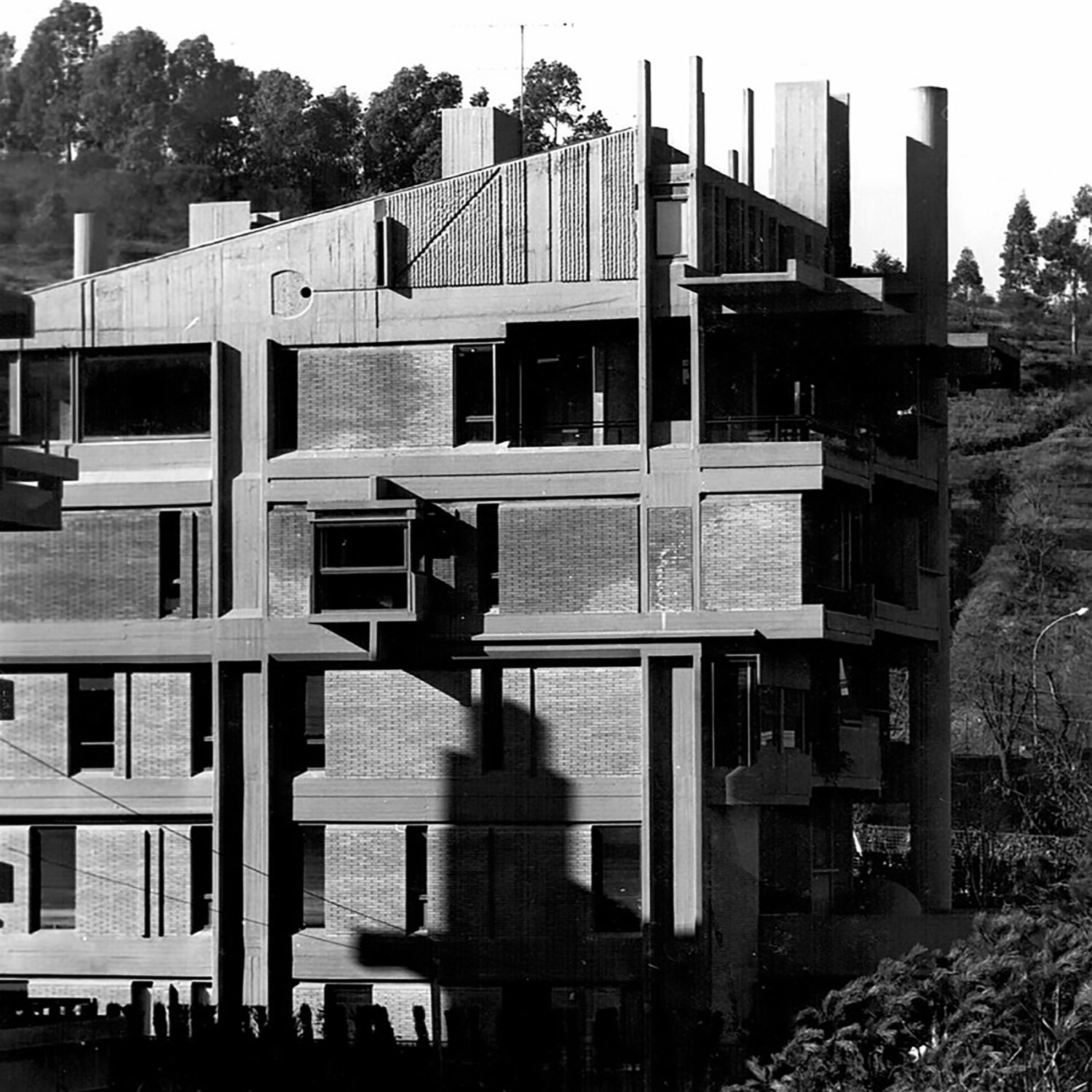
In 1969 the Italian architect Francesco Beraducci (1924-1992) built a small villa in Via Colli della Farnesina, Rome.
Following some spatial organizational ideas from Le Corbusier, he realized the structure as a concrete and brick construction with embedded pre-cast concrete elements. Leaving the main supporting structure exposed some parts of the facade echoes ideas from Kenzo Tange, Paul Rudolph and Mendes de Rocha.
Where Francesco Berarducci develops his personal type interpretation of the “Villino” and a type of housing with individual apartments in a still quite traditional plan layout, the choice of material – concrete, the exposure of an overarching megastructural element, his use of irregular distributed infill elements for the facade – both closed and open or glazed were for him a shift in his architectural language.
He experimented with the integration of greenery into the architecture, he developed a much more fluid and organic approach in the placement of the building within the site context.
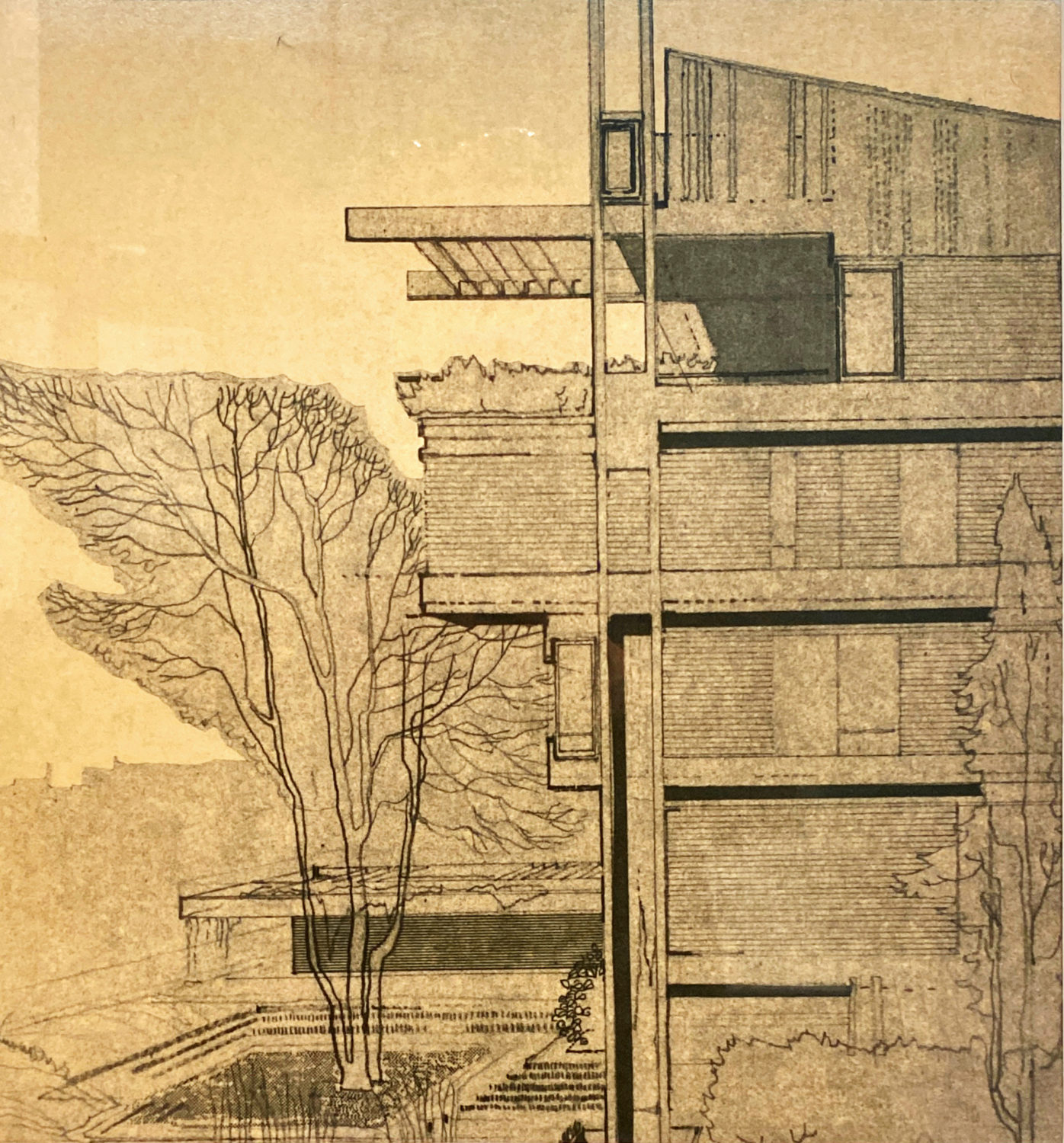
Elevational sketch of the villa in Via Colli della Farnesina.
Rome Brutalist tour LINK
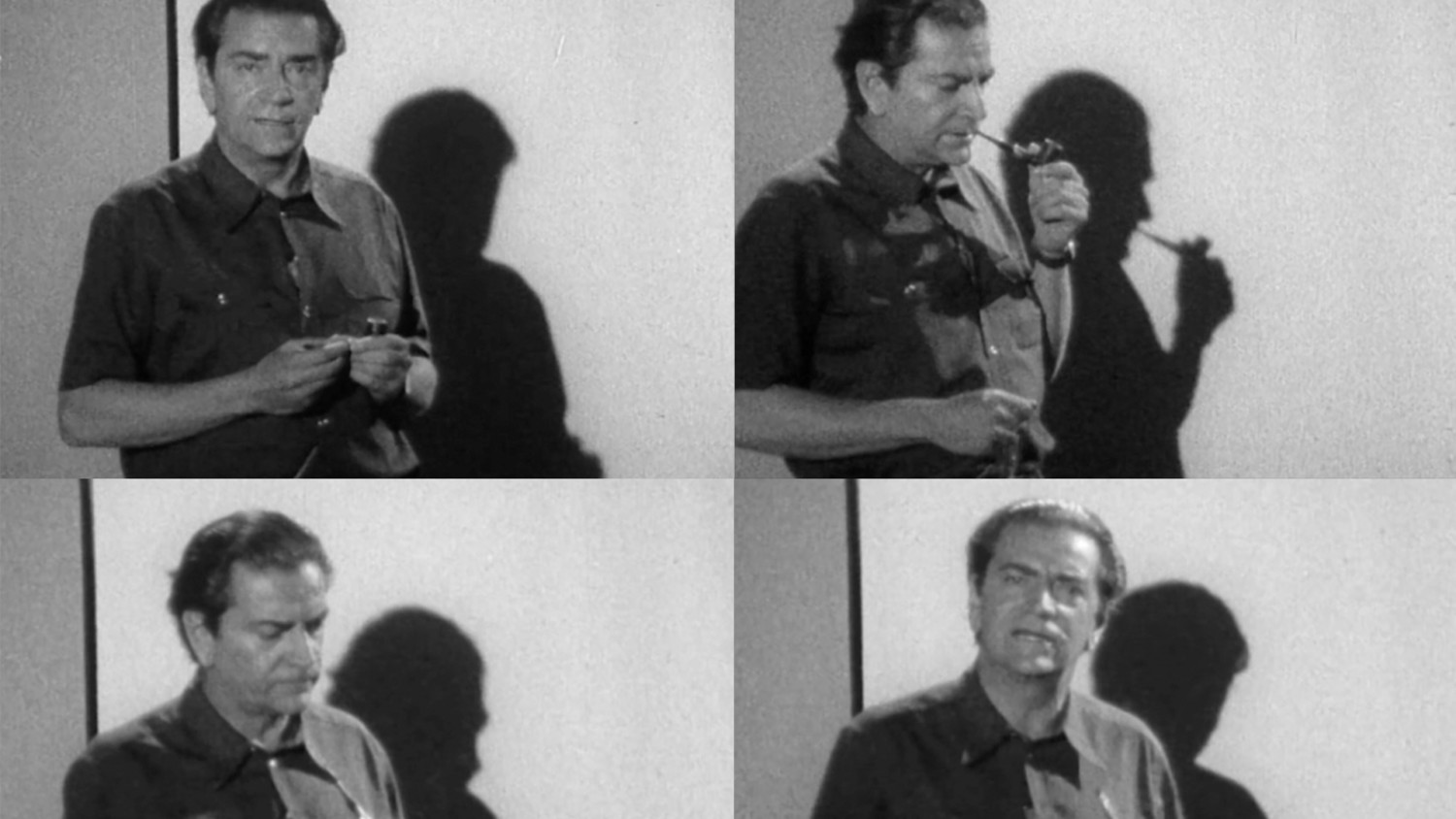
The Italian architect and historian Bruno Zevi was born in Rome in 1918 and died in Rome in 2000. He enrolled in the Faculty of Architecture at the University of Rome. Following the racial laws, he left Italy in 1938, going first to the United Kingdom and then to the United States.
During his time in the States, he discovered the work of Frank Lloyd Wright and his organic architecture approach. He graduated from the Graduate School of Design of Harvard University, chaired by Walter Gropius, and directed the “Quaderni Italiani” of the movement “Giustizia e Libertà” (1933-1944). He discovered Frank Lloyd Wright, whose preaching in favour of organic architecture will remain a strong supporter of life. Returning to Europe in 1943, he participated in the anti-fascist struggle in the ranks of the Action Party. In 1944 he promoted the Association for Organic Architecture (APAO) and the following year he founded the magazine “Metron”. From 1945 until his death in 2000 he was editor of his own maganizne L’architettura. Cronache e storia.
19545 Zevi published Verso un’architettura organica – Towards an organic architecture. The titles suggests it is a response to Le Corbusiers book ‘Vers une architecture’ published 1923.
Following the second work war Zevi was keen to modernise the field of architectural academia in Italy with fresh ideas.
In 1945, Bruno Zevi became Professor of Architectural History at the University of Venice. Later, he was a Professor at the University of Rome, and became a member of the International Academy of Architecture in Sofia, Bulgaria.
The Modern Language of Architecture, published 1978 became one of his most significant publications.
Following his work in Towards an Organic Architecture, Zevi sets finally sets his seven principles he bases his teaching on. This is clearly breaking with a much more formal set of rules promoted by Le Corbusier in his Five Points (1926) or the approach by Mies van der Rohe. The principles are in stark contrast to the predominant teaching philosophy at the time promoted by ideas from the Beaux Art school. Instead of a focus on classical order, the rules of proportion, ideas of beauty and symmetry, Zevi sets out a different framework. He promotes free interpretations, a design process that celebrates the differences and dissonances. The architecture is seen as an integrated part of the surrounding landscape and the context it is set in. The focus is on a multilayered and -dimensional vision of architecture where a playful approach to design and a union of architecture and engineering pavs the way to a diverse expression in architecture. The spaces resulting from this approach embrace the use as their core function.
Architecture is seen at the forefront of innovation and not as the result of backwards-looking reflective processes.
Selected publications:
-Bruno Zevi, Verso un’architettura organica, Giulio Einaudi editore, Torino 1945 (English translation, Towards an Organic Architecture, Faber & Faber, London 1950)
-Bruno Zevi, Saper vedere l’architettura, Giulio Einaudi editore, Torino 1948 (English translation, Architecture as Space. How to look at Architecture, Horizon Press, New York 1957; Da Capo Press, New York 1993)
-Bruno Zevi, Storia dell’architettura moderna, Giulio Einaudi editore, Torino 1950 e 1975
-Bruno Zevi, Architecture as Space: How to Look at Architecture, Horizon Press, New York 1957
-Bruno Zevi, Spazi dell’architettura moderna, Giulio Einaudi editore, Torino 1973
-Bruno Zevi, Cronache di architettura (volumi I-XXIV, saggi 1-1276), Editori Laterza, Roma – Bari, seconda edizione 1978
-Bruno Zevi, Editoriali di architettura (Architetti e linguggio, Crtici e liguistica, Paesaggi e citta, Avanguardia e restaurazione, Design come ragione civile, Not quite architecture), Giulio Einaudi editore, Torino 1979
-Bruno Zevi, Michelangiolo architetto, edited with P. Portoghesi, Giulio Einaudi editore, Torino 1964
-Bruno Zevi, Erich Mendelsohn Opera Completa, Etas Kompass, Milano 1970; Testo & Immagine, Torino 1997 (English translation, Erich Mendelsohn – The Complete Works, Birkhäuser Verlag, Berlin, 1999)
Guido Luca: Bruno Zevi on Le Corbusier: another way to an “organic architecture.
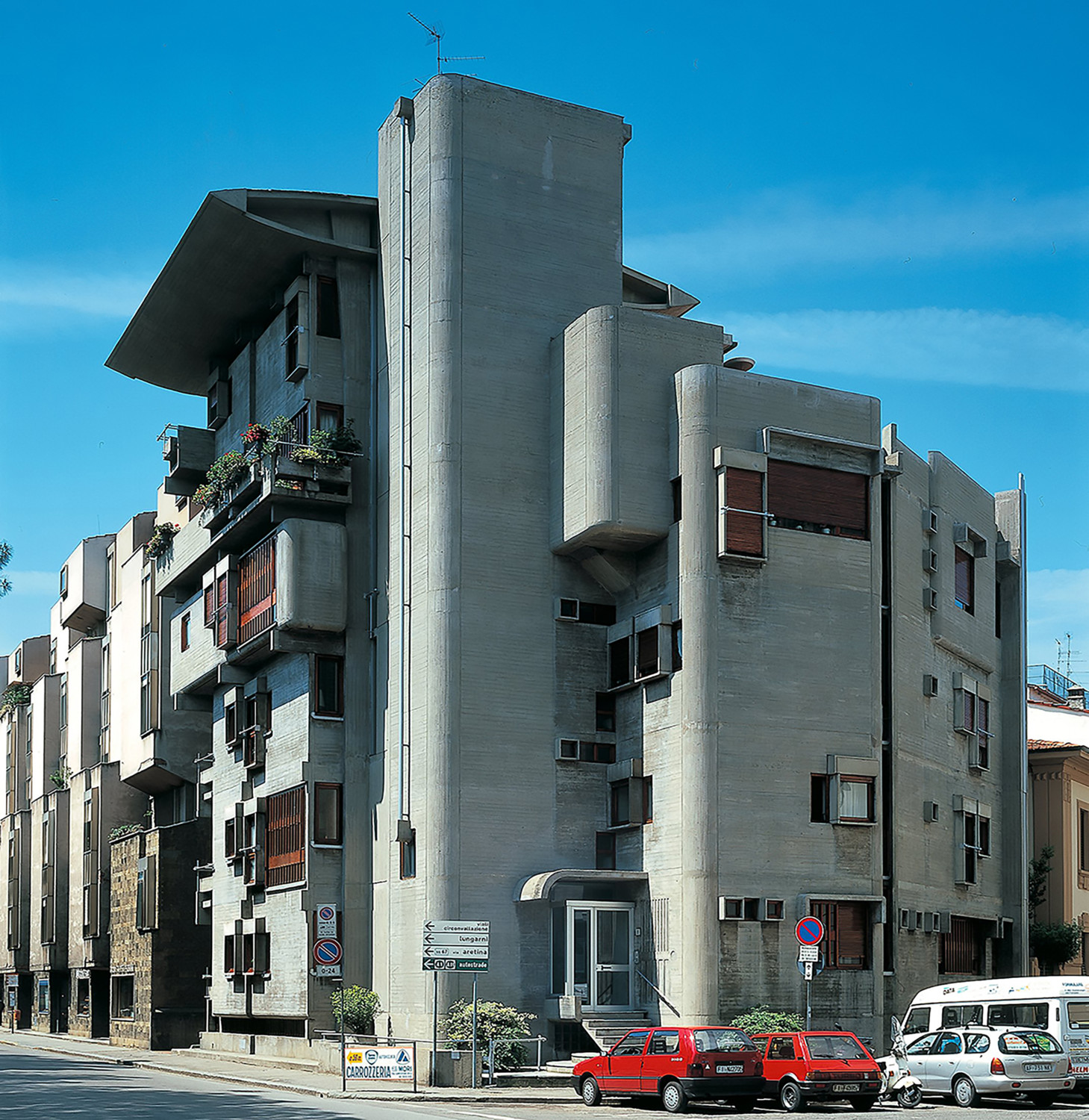
Leonardo Savioli, Danielo Santi, Casa per appartamenti, Florence 1964-1967.
The Italian architect Leonardo Savioli (1917-1982) studies in FLorence where he continued his career teaching at Florence University. His approach to teaching was seen as radical, he embraced experimental ideas and a creative dialogue.
In his course ‘Interior Architecture and Design, taught from 1966-1970 he embraced the idea of prefabricated modular concrete elements. He tested this ideas by building his own studio in 1968 – a structure made of steel with interchangeable concrete and steel modular pieces.
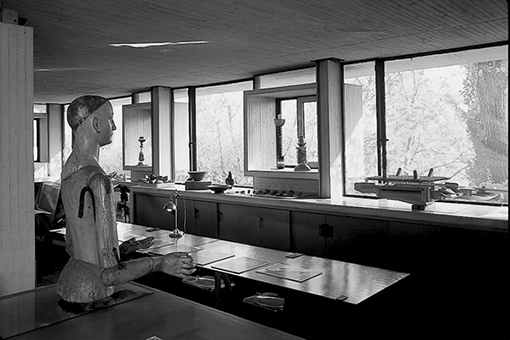
View from inside Savioli’s own studio in Florence shwoing prefabricated concrete frames set within the horizontal windws.
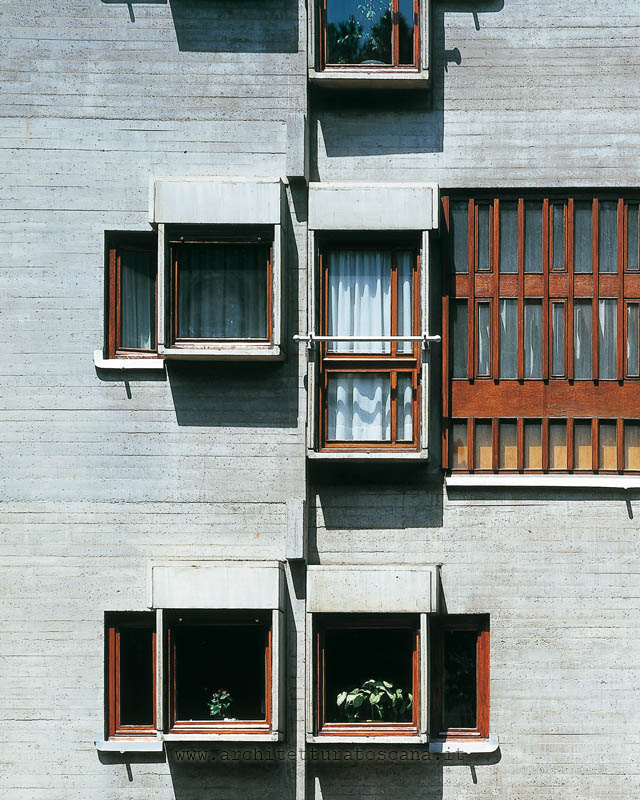
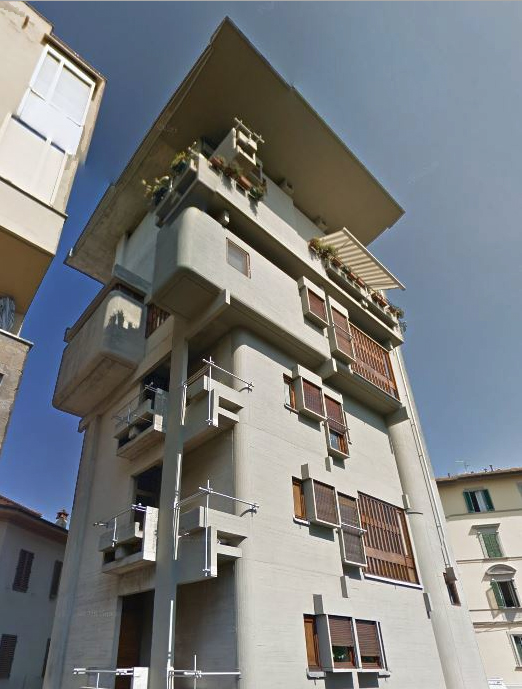
The Apartment block in Florence is made of in-situ concrete with precast elements set within the elevations.
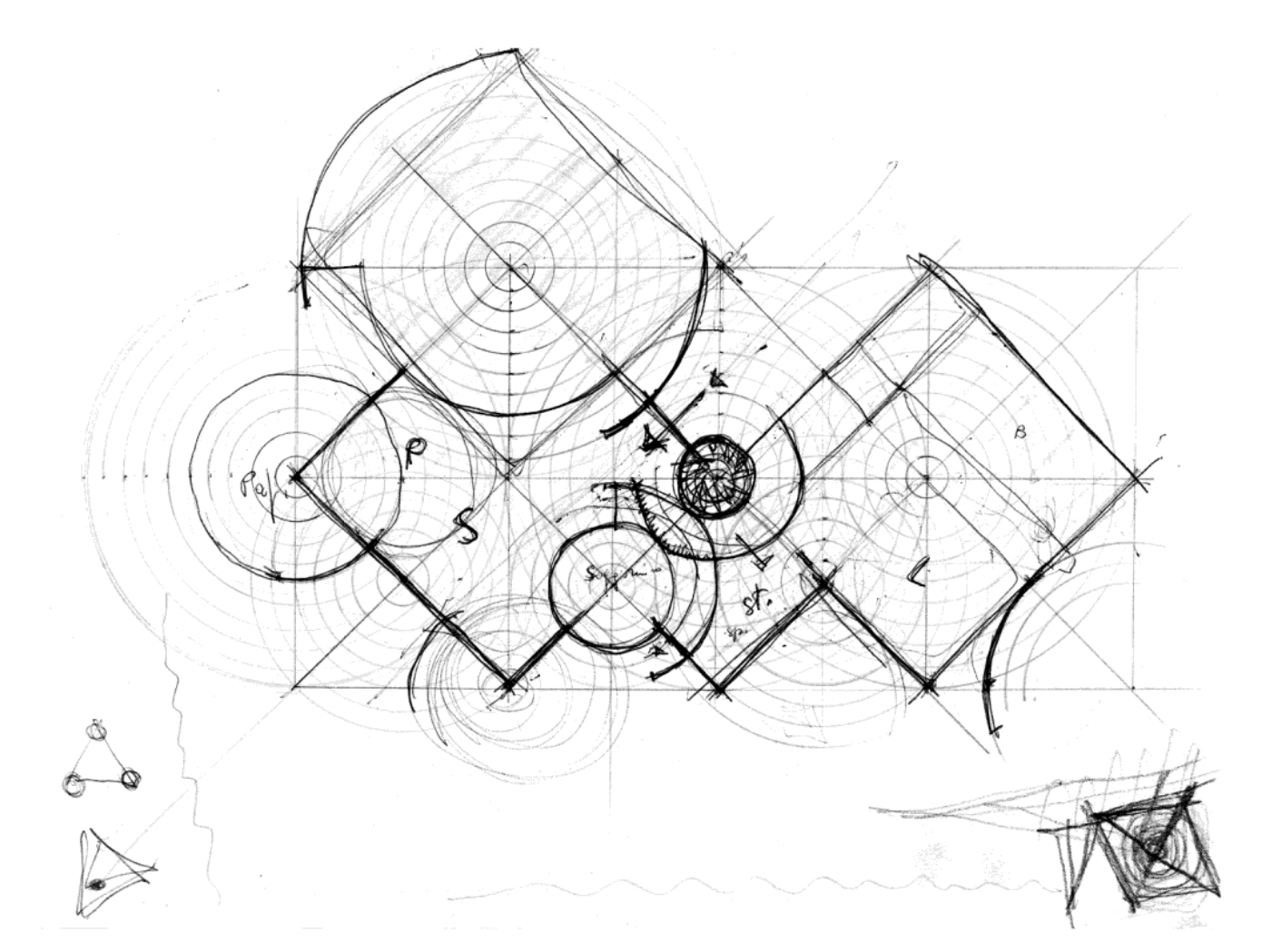
Drawing by Paolo Portoghesi of the Casa Andreis in Scandriglia, 1964-69. (Souce Centre Pompidou)
Paolo Portoghesi (1931-) is an Italian architect, theorist, historian. He teaches architecture at the University La Sapienza in Rome.
He became with Bruno Zevi a supporter of more organic architecture. During is career his research focusses on the architecture of Borromini and the Baroque. Together with Bruno Zevi he curated an exhibition commemorating the work of Michelangelo.
In his early work (1962-1975) Protoghesi followed a more fluid architecture that takes references from nature.
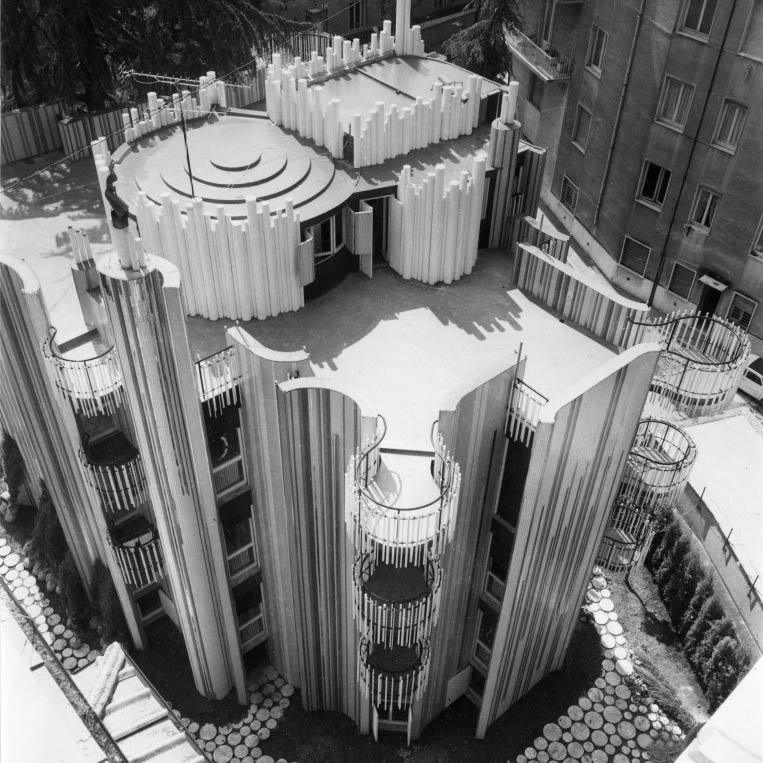
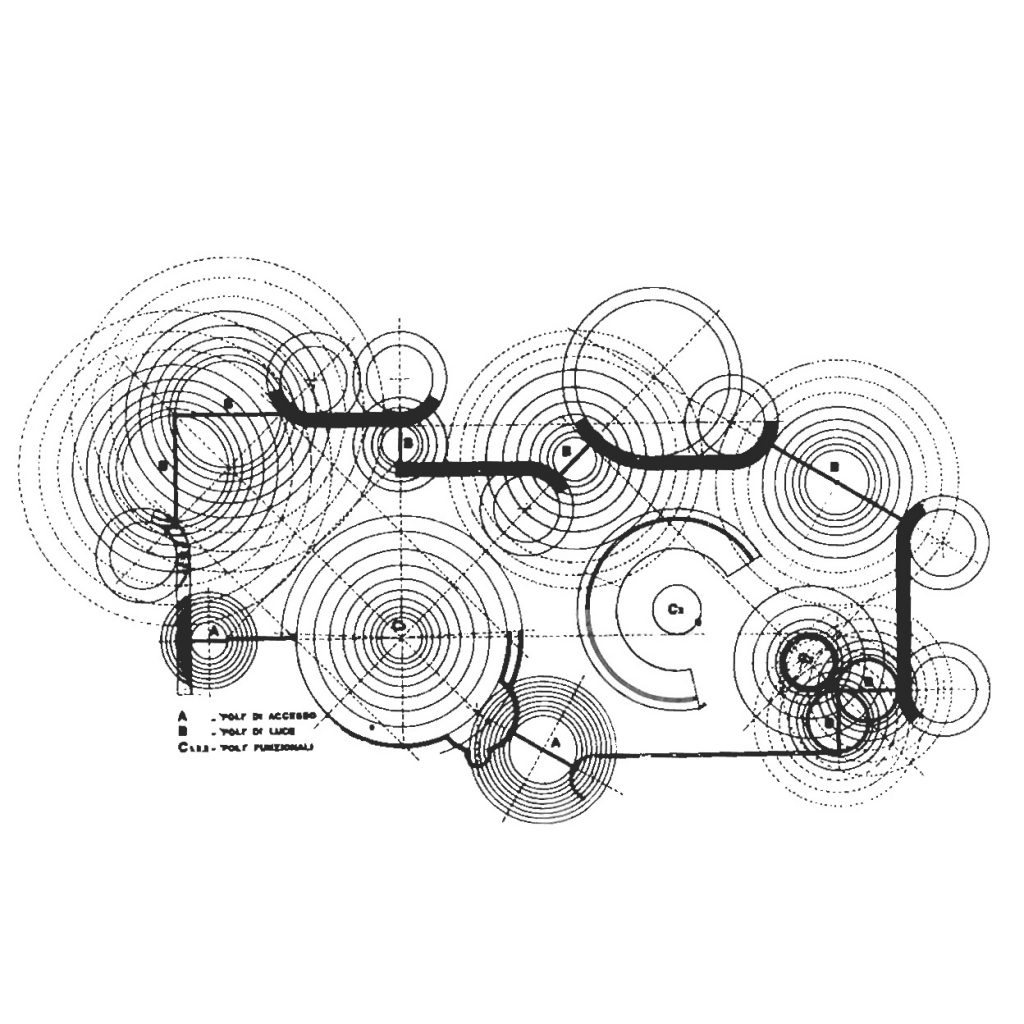
Casa Papanice, Rome, Italy. 1966, Paolo Portoghesi
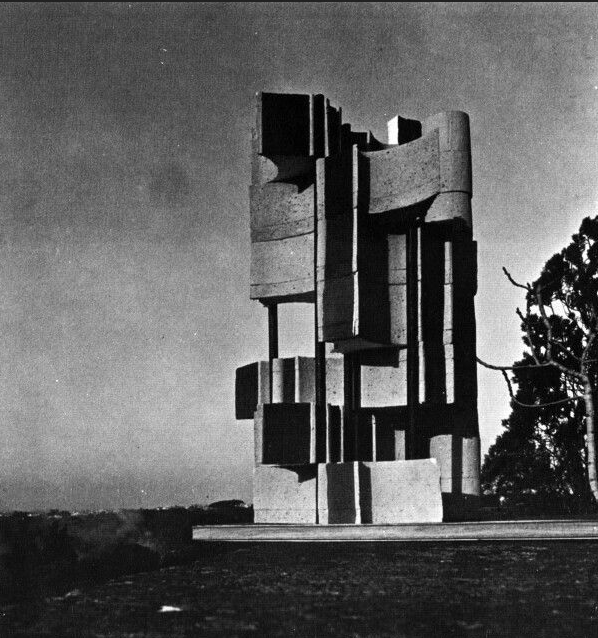
Casa Baldi design, Roma 1959-61
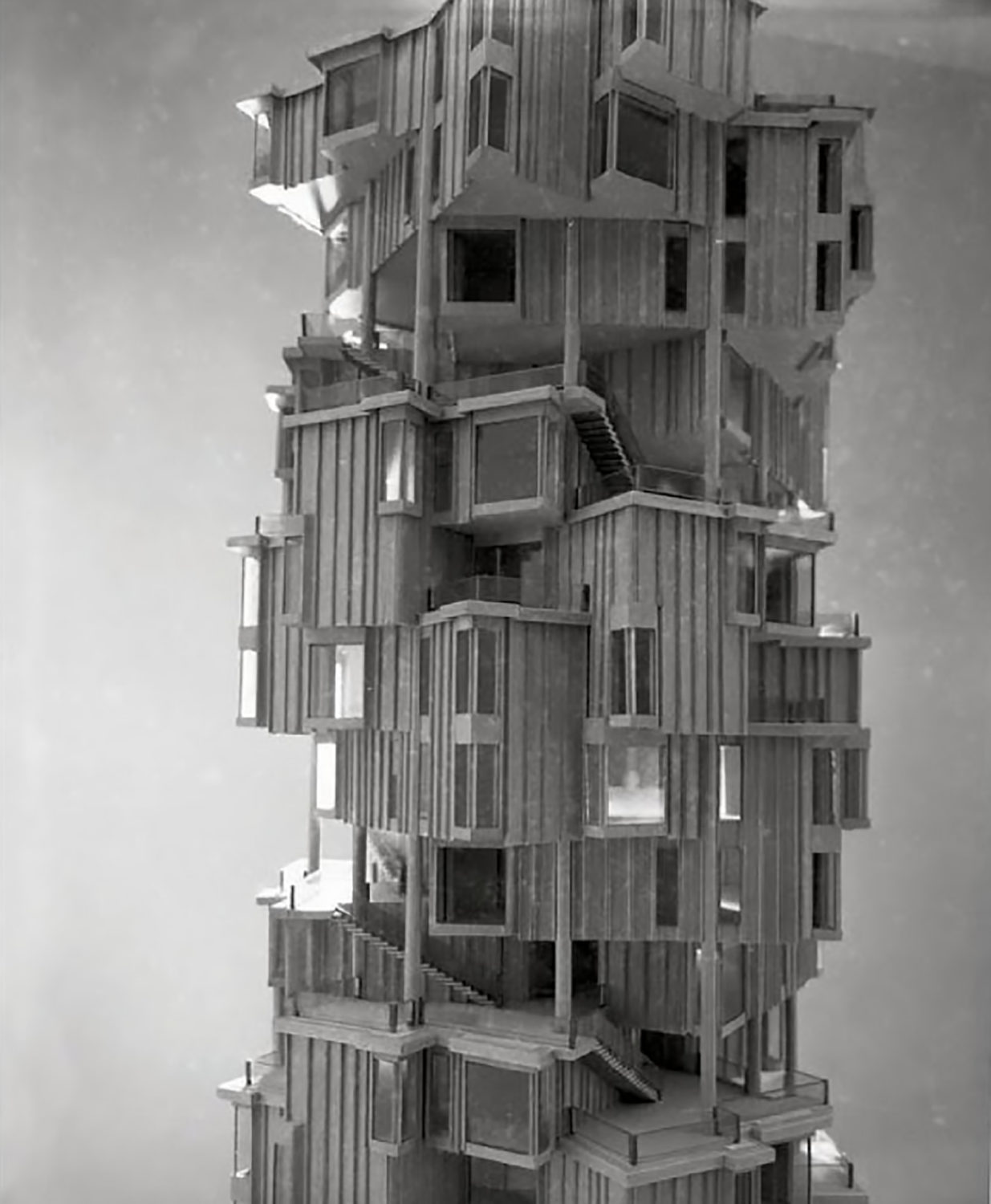
Santa Marinella Apartment Block, Rome, 1966
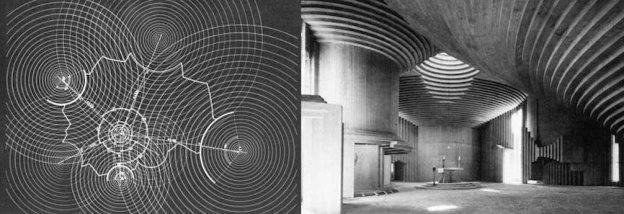
Church of Sacra Famiglia, Salerno, Italy, 1974
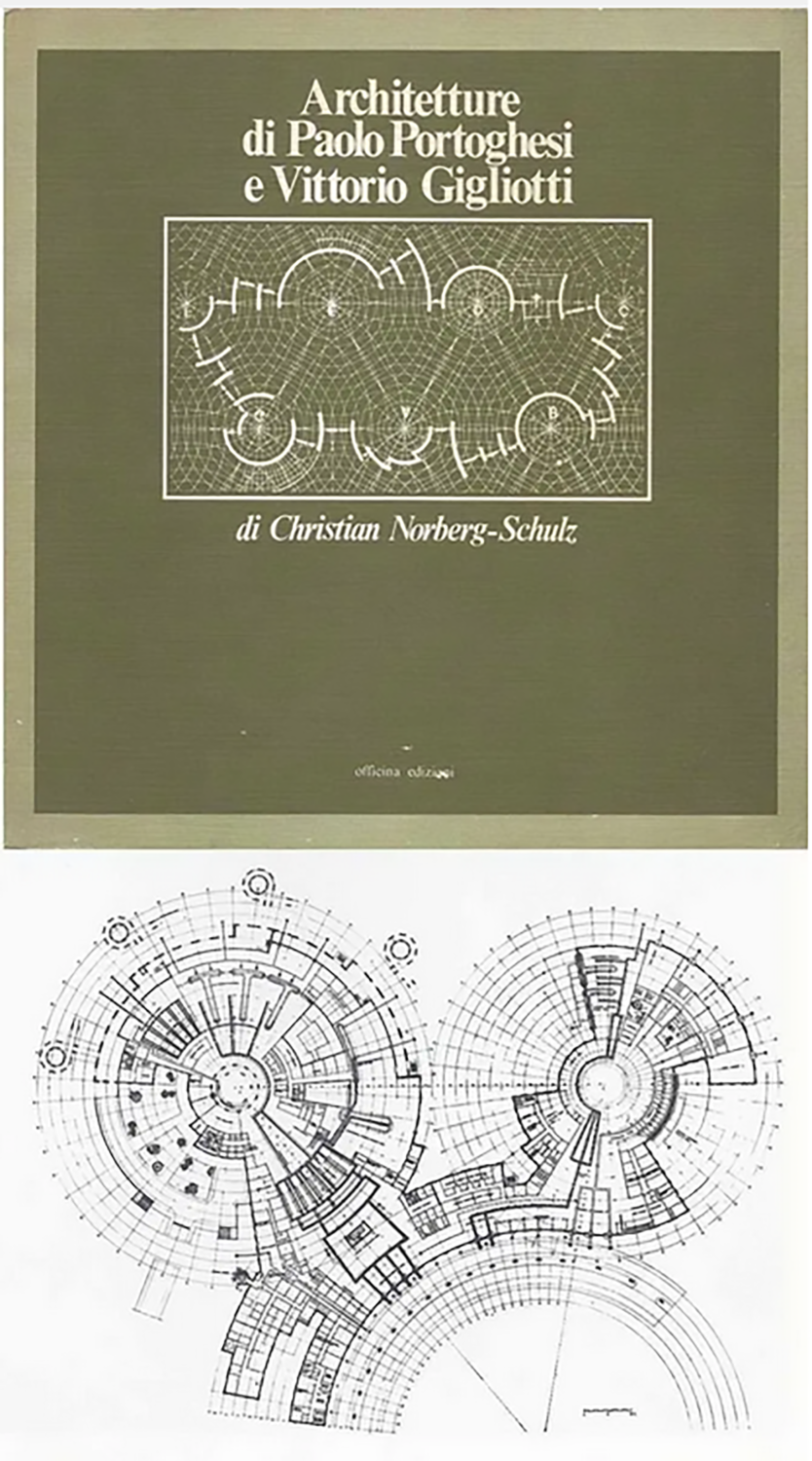
Design for a new airport in Karthoom, 1981
Paolo Portoghesi – Projects and Drawings, 1979
Artribune – Portoghesi and Zevi
.